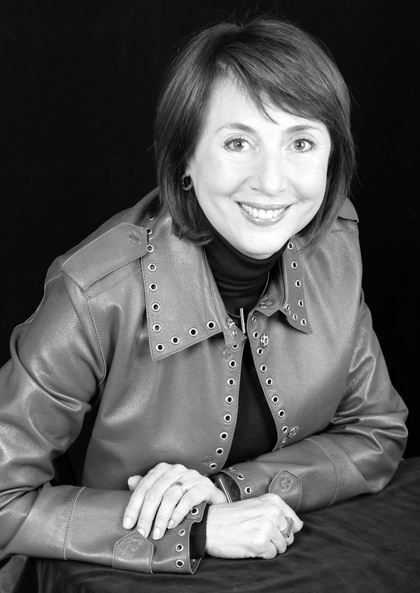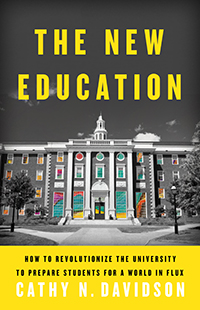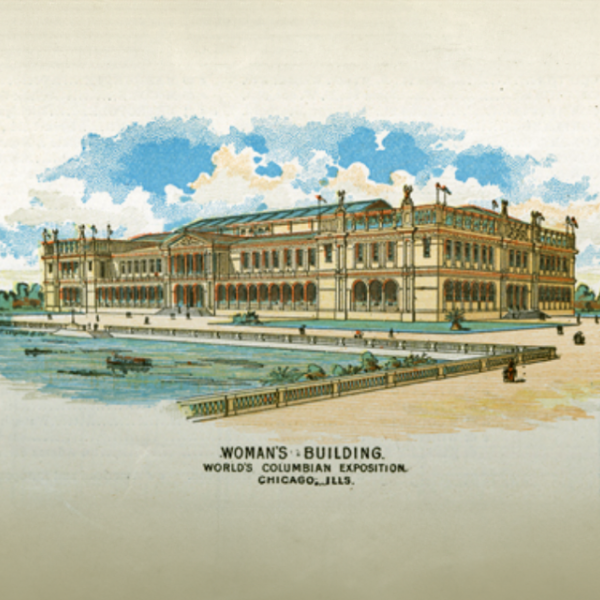Melanie Walsh is a Graduate Student Fellow in the Center for the Humanities and a PhD Candidate in the Department of English.
Cathy N. Davidson, a distinguished scholar of the history of technology and one of the leading voices in the movement to revolutionize higher education, will deliver the James E. McLeod Memorial Lecture on Higher Education on Friday, October 5. Here, Davidson talks about childhood math camp, her new book, starting a social network older than Facebook and the millennial generation’s raw deal.
In your most recent book, The New Education (2017), you compellingly make the case that higher education must be redesigned in the face of the digital revolution. When did you first become interested in digital technologies?
Math camp was the happiest educational experience of my childhood. I loved theoretical math in grade school even and majored in philosophy of mathematics in college with the intention of going on in artificial intelligence or what at the time was called “quantificational logic” — roughly, machine language, translating human language into code and instructions that can be executed by computers.

But then your early research focused on experimental American fiction and the rise of the novel.
When I switched into American studies, my interest was still on technology and primarily in the relationship between technological change and cultural, political, educational and social change. I was also interested in the role of aesthetics and aesthetic production in that process during the last great “information age,” the age of industrialization and the invention of mass printing. That’s when the novel began to emerge as the dominant literary form. Much of my current work applies those principles to the current information age.
Can you tell me about how your work started to address the relationship between technological changes, the humanities and higher education more broadly?
In 2002, I attended a meeting convened by the Mellon Foundation of directors of humanities centers (soon after I co-founded the John Hope Franklin Humanities Institute at Duke University with Dean Karla F. C. Holloway). Some other humanities center directors expressed the idea that the humanities had to somehow ward off or do battle with technology, whereas I and David Theo Goldberg, director of the University of California Humanities Research Institute, felt the opposite: that the humanities were important enough to have a major role in understanding, critiquing, applying and addressing the role of technology in society and in education.
We talked about this at the meeting. We knew many others who shared our conviction and we formed a coalition of what would become HASTAC—the Humanities, Arts, Science, and Technology Alliance and Collaboratory. The National Science Foundation (NSF) was creating “collaboratories” at the time and funded our first meeting. HASTAC is now known at NSF as the world’s first and oldest academic social network — older than Facebook or even Myspace. We have over 16,300 network members dedicated to “Changing the Way We Teach and Learn.” Our other motto is: “Diversity Is Our Operating System.”
Wow, an even older social network than Myspace! I had no idea. I myself am a 2016-2018 HASTAC Scholar. Can you explain, for readers who might be less familiar, what an “academic social network” means? Why were you motivated to found HASTAC in the first place?
First, I’m so pleased you are a HASTAC Scholar. We find that many of our scholars are asked about HASTAC in future job interviews and at other times because, as a social network, its content is literally created by the network members. HASTAC Scholars are about 80% graduate students and 20% undergraduates who are nominated by a faculty member. Scholars can become the “eyes and ears” of their institution, reporting on events, programs, panels and projects to the network. They can engage one another and make connections with other scholars on HASTAC.org, and they can publish preliminary research, write about their teaching and so forth.
It’s a great place to learn how to write for a larger audience because it is both open and yet not a free-for-all like much of the web. It’s free to join and anyone can. Once registrants are approved (a process that safeguards against trolls and bots), they are free to write anything that is relevant to our mission while never trolling others. We invest in the next generation of scholars, and it is a platform in which scholars connect with one another, showcase their work and publish their work to a receptive audience.
We especially support work that passes on those principles to the next generation, that tells future professors that, as distinct from the extremely hierarchical forms of education that thrive on income and status and racial and gender inequality, higher education should be a “commons,” a place where every student and every member of the community — full professors, starting assistant professors, part-time instructors, administrators, students, alumni — contributes ideas that help us all be better and better informed citizens of the world. Someone who learns to express and understand and evaluate ideas is, by definition, “workforce” ready — and what I call “world ready.”
[H]igher education should be a “commons,” a place where every student and every member of the community — full professors, starting assistant professors, part-time instructors, administrators, students, alumni — contributes ideas that help us all be better and better informed citizens of the world.
— Cathy Davidson
That’s powerful. The title of last year’s annual HASTAC conference was “The Possible World of Digital Humanities,” a broad, emerging field that many HASTAC members are associated with, which ranges anywhere from text mining to digital archives to video game studies. In your book, you call for the breakdown of boundaries between traditional disciplines and departments. I’m curious how you think the “digital humanities” fits into that story.
I think some work in what is called digital humanities is brilliant and some is dull — as in any field, both new and old. “Digital” doesn’t say much about relevance, only about tools, and the term is used in many different ways by different people.
I’ll conclude by asking about some of the concluding pages of The New Education. Though you are now a distinguished professor, in your acknowledgements at the end of the book you harken back to your rebellious teenage years and trouble in high school. The book is also dedicated, first and foremost, to “Millennials.” How do the experiences of young people—your own, that of millennials, that of future generations—figure into your work?
I’ve been accused of being a “youth idolator” (literally!). That’s a ridiculous phrase but, yes, I believe that students in my classrooms now have been given the most unfair burden of any students; have inherited a world with abundant social, political and environmental problems; and are the most clear-eyed, collaborative, determined and dedicated generation I’ve ever experienced in decades of teaching. They’ve been given a raw deal. And I admire this generation hugely. I hope very much that “the young people will win.”
“Revolutionizing Higher Education”
Cathy Davidson, cofounding director of HASTAC, is Distinguished Professor of English and Founding Director of the Futures Initiative at the Graduate Center, CUNY
October 5, 2018 – 3 pm
Clark-Fox Forum, Hillman Hall
FREE & OPEN TO THE PUBLIC






